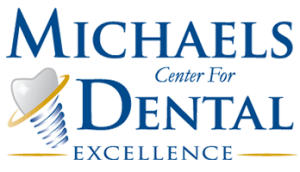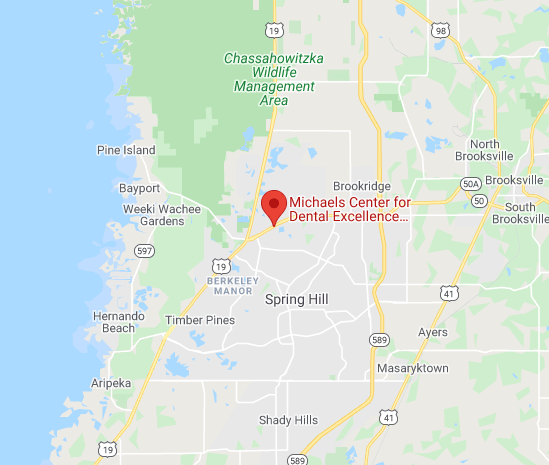Home Dental Care
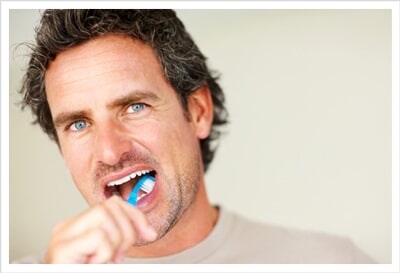
A beautiful and healthy smile starts at home! Taking care of your teeth daily is key to not only maintaining your oral health, but your overall health as well. Many preventable diseases have been linked to a lack of oral health care. Protect yourself so that you, and your smile, can live a long a healthy life!
Seniors and Oral Health

Good Oral Hygiene
More and more people today are avoiding the need for dentures, bucking the notion that false teeth are a normal part of growing older.
In fact, there’s usually no reason for you NOT to keep your teeth your entire life, providing you maintain a healthy balanced diet and practice good oral hygiene.
Another desirable side effect of good oral hygiene: avoiding more serious problems such as hypertension, cardiovascular disease, diabetes, and even stroke. Indeed, medical research shows that a healthy mouth equates to a healthy body.
Who knew? The mouth is a part of the digestive system of the body. Without a functioning masticatory (chewing and initial breakdown of food) system, the rest of the digestive system is challenged. Your stomach, intestines and excretory system have to work much harder to break down larger and more fibrous pieces of food to access nutrients and rid waste. This additional hardship can lead to digestive problems such as indigestion, irritable bowel syndrome (IBS), limiting foods containing certain supplements and nutrients (i.e. not eating fiber-loaded apples because you can’t chew them), Gastroesophogeal Reflux Disease (GERD), etc. AND because most people in this age group are also on medications which cause xerostomia (dry mouth), the system is already compromised even if you have all of your teeth.
Another thought to keep in mind is that aging takes a general toll on our bodies. You cannot maintain some of the activities you are used to enjoying. Many times, social festivities as we mature include more eating out, or going to a friend’s or neighbor’s house for dinner, having people over for cocktails and hors d’ouevres; in other words, eating is involved in your social hour. If you cannot eat easily, or enjoy eating whatever you want, you limit yourself in these activities.
And just because you’re getting older doesn’t mean you can relax on your daily routine. This means brushing twice a day, flossing, and rinsing.
Dexterity and Arthritis
Your dexterity has changed. Think about signing your name. Does it look the same as it did 5-10 years ago? You are not doing anything differently, but the way you sign your name changes as dexterity changes. People who suffer from arthritis or other problems have more difficulty and even painful to practice good oral hygiene.
Thankfully, industry has responded with ergonomically designed devices such as toothbrushes and floss holders that make it easier to grasp and control. Mechanical tooth brushes and proxa brushes are the best.
You can also use items around the house to help you. Inserting the handle of your toothbrush into a small rubber ball, or extending the handle by attaching a small piece of plastic or Popsicle stick may also do the trick.
Floss can also be tied into a tiny loop on either side, making it easier to grasp and control the floss with your fingers. You can also choose to use the flossers with the plastic handles available at drugstores.
One popular flossing adjunct is called a water pick, or irrigator.
Water picks use powerful tiny bursts of water to blast away food particles and other debris in hard-to-reach areas of your mouth. Dentists use professional-grade water picks when preparing a tooth for restoration, or in general cleaning and exams.
Risks
Having to wear dentures is one of the risks of poor oral hygiene. Older adults also may be at risk for such oral problems as:
- Gingivitis – a condition that occurs when bacteria and plaque invade below the gum line, causing inflammation of the soft tissues and, sometimes, bleeding. Advanced gingivitis can lead to formation of a substance called tartar (also called calculus), which is a hard and crusty coating that can usually only be removed by scraping.
- Periodontal (gum) disease – Usually the advanced stages of gingivitis, gum disease begins with infections in the gums that can spread to the teeth and bones. Advanced forms of gum disease can lead to a host or problems that can only be treated by extreme measures such as extraction. Click here for more information on periodontitis.
- Dry mouth – Older adults sometimes experience diminished production of saliva and a condition called dry mouth, which leads to problems such as swallowing or speech difficulty. Certain kinds of medications and even cancer treatment can cause dry mouth. One of the more serious consequences of dry mouth is greater susceptibility to cavities and other oral problems because saliva acts as a natural rinsing agent in the mouth. This can also cause your denture to rub or fall out since there is less saliva for suction and lubrication.
- Oral cancer – Older adults are more prone to certain kinds of oral cancer. Head and neck cancer in 2012 was reported as the sixth most common cancer. The five-year survival rate (the percentage of those with oral cancer who will still survive after five years) is 81% when detected early, but drops to 42% if larger when detected and treated, to a low of 17% when there is metastasis. If your dentist identifies something suspicious, and recommends a biopsy or a second opinion, it can save your life. If you decide not to follow the recommendations, the consequences are sometimes harsh. Early signs of oral cancer are unusual lumps, patches or lesions, as well as unexplained or chronic bleeding or areas which have trouble healing.
- Root surface cavities – With recession or cavities which already invade the area below the gums comes cavities on root surfaces. Under bridges and adjacent to teeth which hold partial dentures are other areas you commonly find these cavities. Fluoride varnish (applied by your dentist or hygienist) and high fluoride toothpastes (prescription) are helpful in fighting these cavities and even strengthening the root surface. These are both low-cost ways to help prevent costly dental work, or the cost of losing and replacing a tooth.
- Compromised digestion – The digestive system is set up to accept food which is properly broken down first by the teeth, and the digestive salivary enzymes (amylase). If the teeth are not functional or there are fewer teeth to accomplish the task, there is compromise, and the extra load is placed on the rest of the digestive system.
- Recession – Recession is when the gums recede revealing a weaker root surface of the tooth. The root surface of the tooth was never meant to withstand the acids and attacks from bacteria caused by normal every-day eating and digestion. Enamel is strong, and cavities can form on enamel, they can form much easier on the root surface. The root surface is also more porous than enamel, so there can be tooth sensitivity associated with recession. When recession of the gums occurs, it means that some gingiva (gum tissue) is now missing. With this loss of gum tissue, bone loss occurs simultaneously. Loss of bone and tissue means loss of the very structures which hold teeth in place. A fourth consequence of recession is that because the gums no longer fill the areas between your teeth, more food and debris is caught between the teeth and remains there. This causes cavities in these areas, many times under existing dental work such as crowns, bridges or fillings. Treatment for recession can be as simple as utilizing a desensitizer, or changing the way you clean your teeth, to periodontal surgeries or grafting to prevent tooth loss.
- Cracked teeth – Over time teeth will show signs of wear. Many times, they fracture. Even a person who has had no cavities can fracture a tooth and require support such as a crown. Teeth with large fillings can last many years without requiring any intervention, but when they do start to breakdown, it is often a crown which is required to preserve the tooth. Because the crown encircles the tooth, it prevents opening of the fracture and further splitting when the tooth is used for chewing. If a tooth splits too far down the root, there is no long-term solution for keeping the tooth, and removal is usually the only option. Cracks are not always visible on radiographs or when visually observing the tooth. Sometimes your symptoms, if any, are the only way to diagnose a fracture.
Overall, we age, period. Our teeth age as well as our bodies. The better we take care of them, the longer they last. Dr. Michaels often asks patients if they are proactive or reactive. No matter which you decide, teeth will require more maintenance as they have endured more years of use. Dentistry has advanced along with medicine, and the options to help you keep your teeth for a lifetime are readily available.
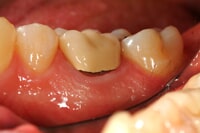


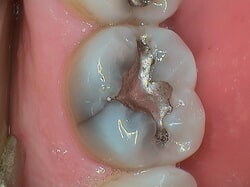
Denture Care
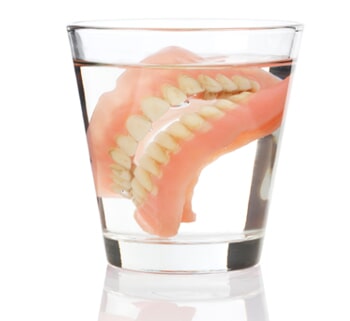
Dentures made by Dr. Michaels are made from durable materials designed to give you a natural appearance.
Keep in mind that just like your teeth, dentures should be cared for with the same diligence. This means daily brushing and regular visits to your dentist.Usually dentures need re-fitting or a reline, every 3-5 years to keep up with the changes which occur to your gums and bone. Sometimes if you lose or gain weight, the fit of the denture also changes; a reline can help them fit again. Though some dentures last much longer, most dentures are re made about every 8-10 years due to significant changes in your mouth, or teeth which have worn down over time. (If a dentist uses lower quality teeth, the wear can occur as early as 2-3 years.)
Regular visits to your dentist are critical. Not only to check your dentures, but because you are still susceptible to oral cancer. Your dentist should check for any signs of a problem when evaluating your denture. If your denture is not fitting as well, it could also be a sign of a growth or tumor in the area.
Just like natural teeth, dentures need to be cleansed of plaque, food particles and other debris. Keeping your dentures in top shape will also help keep the soft tissues of your mouth healthy; an unclean or malformed denture can cause infections and irritation.
Cleaning Techniques
Remember to rinse and brush your dentures after every meal, and soak them in denture solution overnight. This also allows your gums to breathe while you sleep.
Here are some simple techniques for keeping your dentures clean:
- People can brush their dentures in a variety of ways. Some people use soap and water. Popular denture pastes and creams also can be used. Do not use toothpaste; it is generally abrasive to the denture surface.
- Avoid using highly abrasive chemicals or pastes, or vigorously brushing with hard bristled toothbrushes. These can scratch or even crack dentures.
- Hold your dentures gently to avoid loosening a tooth.
- Clean your dentures with cool or tepid water over a water-filled sink. Hot water may warp a denture. A small washcloth placed in the bottom of the bowl will ensure that your denture isn’t damaged if it falls.
- Soak your dentures overnight in any commercially available product like Efferdent or Polident, and remember to rinse your dentures before placing them back in your mouth. Be careful if you choose to use colored cleaners (like blue mouthwash) as they can sometimes stain your denture.
- If you have remaining teeth, remember to use a separate toothbrush to clean your own natural teeth, as well as all of your gum tissues. In lieu of a toothbrush, a soft washcloth may be used to wipe your gums.
Over time, even daily care of your dentures may require them to be cleaned by the dentist. A powerful ultrasonic cleaner may be used to remove hard accumulations of tartar and other substances.
Women and Tooth Care

Women have special needs when it comes to their oral health. That’s because the physical changes they undergo through life-things like menstruation, pregnancy and childbirth, breast-feeding and menopause cause many changes in the body, some harmful to teeth and gums.
Lesions and ulcers, dry sockets, as well as swollen gums, can sometimes occur during surges in a woman’s hormone levels. These periods would be a prime time to visit the dentist. Birth control pills have been shown to increase the risk of gingivitis, and hormone replacement therapy has been shown to cause bleeding and swollen gums. Gum disease can also present a higher risk for premature births.
Some research has shown that women may be more likely to develop dry mouth, eating disorders, jaw problems such as temporomandibular joint disorders, and facial pain-all of which can be difficult from a physical and emotional standpoint.
Taking care of your oral health is essential and can go a long way to helping you face the physical changes in your body over the years.
The Preventative Program
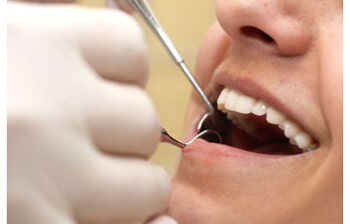
Both natural teeth and teeth with restorations survive best in an oral environment that is clean and where the intake of harmful foods is controlled. Our program is designed to help prevent new cavities, preserve teeth that have been restored and manage periodontal disease. At the initial visit oral hygiene instructions are reviewed and are reinforced at subsequent recall visits. The following are helpful recommendations:
- Brush your teeth twice a day in a circular motion with a soft bristled toothbrush aimed at the gum. Mechanical toothbrushes do a significantly better job than a manual toothbrush.
- Floss every night in an up and down motion while keeping the floss in a U-shape and against the tooth surface.
- Avoid smoking
- Avoid sticky sugary foods.
- Eat a balanced diet.
- Use antiseptic and fluoride rinses as directed.
- Sealants placed on teeth with deep grooves.
Tobacco
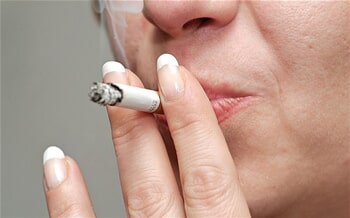
What effects can smoking have on my oral health? Are cigars a safe alternative to cigarettes? Are smokeless tobacco products safe? The American Dental Association has some alarming news that you should know on its web site at www.ada.org
The American Dental Association states that it “has long been a leader in the battle against tobacco-related disease, working to educate the public about the dangers inherent in tobacco use and encouraging dentists to help their patients break the cycle of addiction. The ADA has continually strengthened and updated its tobacco policies as new scientific information has become available.”
Fluoride Facts
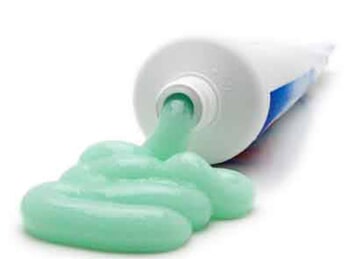
For decades, fluoride has been held in high regard by the dental community as an important mineral that is absorbed into and strengthens tooth enamel, thereby helping to prevent decay of tooth structures.
In nearly every U.S. community, public drinking supplies are supplemented with sodium fluoride because the practice is acknowledged as safe and effective in fighting cavities.
Some private wells may contain naturally fluoridated water.
What Is Fluoride?
Fluoride is a safe compound found throughout nature-from the water we drink and air we breathe, to many kinds of foods.
Why Is Fluoride Important to Teeth?
Fluoride is absorbed into structures, such as bones and teeth, making them stronger and more resistant to fractures and decay. A process in your body called “remineralization” uses fluoride to repair damage caused by decay. This effect is similar to the effect of Vitamin D and calcium on bone.
How Do I Get Fluoride?
Just drinking public water will provide a certain measure of fluoride protection. But for years, health professionals have endorsed the practice of supplementing our intake with certain dietary products, and topical fluorides in many toothpastes and some kinds of rinses. Certain beverages such as tea and soda may also contain fluoride. Certain kinds of dental varnishes and gels may also be applied directly to teeth to boost fluoride intake.
Fluoride Safety
It is generally NOT safe to swallow toothpastes, rinses, or other products containing topical fluoride. In rare cases, some people may be overexposed to high concentrations of fluoride, resulting in fluorosis, which leaves dark enamel stains on teeth.
Mouth Rinses

Mouth rinses can have therapeutic benefits; others are only cosmetic in nature. Some have both attributes. The Food and Drug Administration even classifies mouth rinses this way.
In general, some therapeutic rinses with fluoride have been shown to actually fight cavities, plaque and gingivitis formation. Most of these are prescription and contain alcohol. Some compounding pharmacies will make a non-alcoholic version for people with dry mouth.
On the other hand, cosmetic rinses merely treat breath odor, reduce bacteria and/or remove food particles in the mouth. They do nothing to treat periodontal disease or prevent gingivitis.
In any case, make sure and look for indication on the label of a mouth rinse that is accepted by the American Dental Association.
Surgery or oral disease sometimes leads to complications for which a good quality therapeutic rinse is indicated. Even people who have difficulty brushing (because of physical difficulties such as arthritis) can benefit from a good therapeutic mouth rinse.
Caution: Even rinses that are indicated to treat plaque or cavities are only moderately effective. In fact, regular rinsing with water and use of good quality fluoride toothpaste are actually just as or more effective. Some rinses have even been known to causes severe irritation of the soft tissues in the mouth and other problems such as fluoride toxicity, discoloration or overly sensitive teeth and gums (due in part to high fluoride and alcohol content).
What is Tooth Decay
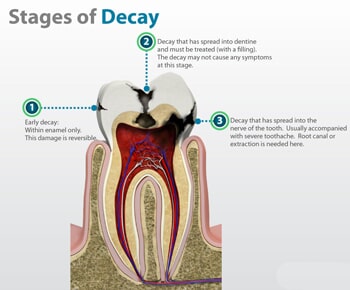
Plaque is an insidious substance-a colorless, sticky film that blankets your teeth and creating an environment in which bacteria erode tooth enamel, cause gum irritation, infect inner structures of teeth such as pulp and the roots, and in extreme cases, tooth loss.
Some of the biggest culprits causing plaque are foods rich in sugar and carbohydrates, including soda beverages, some juices, candy and many kinds of pasta, breads and cereals.
Plaque also can attack fillings and other restorations in your mouth, which can lead to more costly treatment down the road.
Plaque is one of the biggest causes for tooth decay. It also causes your gums to become irritated, inflamed, and in some cases, bleed. Over time, the decay process may cause your gums to pull away from your teeth, a condition called receding gums. In addition, the long-term decay process can lead to infections in your gums and can eat away at the bone structures under the teeth.
Inside your teeth, decay can gradually destroy the inner layer, or dentin, the pulp, which contains blood vessels, nerves and other tissues, and the root.
Periodontal disease is advanced gum disease. This serious condition occurs when the structures that support your teeth, the gums, the bone, break down from the infection. Pain, hypersensitivity, mobility of teeth and bleeding are some of the signs of periodontal disease, though sometimes there are no apparent symptoms. Without the support of the gums and bone, otherwise healthy teeth are lost.
Simple Preventative Measures
The two best defenses against tooth decay and gum disease are a healthy, well-balanced diet and good oral hygiene, including daily brushing with fluoride toothpaste, flossing and rinsing.
A good way to help your oral health between brushing is chewing sugarless gum (Xylitol-containing gum is the most effective); this stimulates your body’s production of saliva, a powerful chemical that actually neutralizes plaque formation and rinses decay-causing food particles and debris from your mouth.
In some cases, our office can prescribe anti-cavity rinses, high fluoride toothpaste or apply special anti-cavity varnishes or sealants to help fight decay. Fluoride trays are easy and beneficial for those with “soft” teeth or patients who have xerostomia (dry mouth) secondary to chemotherapy, radiation therapy and/or medications which cause dry mouth.
What is Tooth Decay

Plaque is an insidious substance-a colorless, sticky film that blankets your teeth and creating an environment in which bacteria erode tooth enamel, cause gum irritation, infect inner structures of teeth such as pulp and the roots, and in extreme cases, tooth loss.
Some of the biggest culprits causing plaque are foods rich in sugar and carbohydrates, including soda beverages, some juices, candy and many kinds of pasta, breads and cereals.
Plaque also can attack fillings and other restorations in your mouth, which can lead to more costly treatment down the road.
Plaque is one of the biggest causes for tooth decay. It also causes your gums to become irritated, inflamed, and in some cases, bleed. Over time, the decay process may cause your gums to pull away from your teeth, a condition called receding gums. In addition, the long-term decay process can lead to infections in your gums and can eat away at the bone structures under the teeth.
Inside your teeth, decay can gradually destroy the inner layer, or dentin, the pulp, which contains blood vessels, nerves and other tissues, and the root.
Periodontal disease is advanced gum disease. This serious condition occurs when the structures that support your teeth, the gums, the bone, break down from the infection. Pain, hypersensitivity, mobility of teeth and bleeding are some of the signs of periodontal disease, though sometimes there are no apparent symptoms. Without the support of the gums and bone, otherwise healthy teeth are lost.
Simple Preventative Measures
The two best defenses against tooth decay and gum disease are a healthy, well-balanced diet and good oral hygiene, including daily brushing with fluoride toothpaste, flossing and rinsing.
A good way to help your oral health between brushing is chewing sugarless gum (Xylitol-containing gum is the most effective); this stimulates your body’s production of saliva, a powerful chemical that actually neutralizes plaque formation and rinses decay-causing food particles and debris from your mouth.
In some cases, our office can prescribe anti-cavity rinses, high fluoride toothpaste or apply special anti-cavity varnishes or sealants to help fight decay. Fluoride trays are easy and beneficial for those with “soft” teeth or patients who have xerostomia (dry mouth) secondary to chemotherapy, radiation therapy and/or medications which cause dry mouth.
Brushing

Brushing is the best way to remove cavity-causing plaque and other debris from your teeth. Mechanical toothbrushes have been proven to be significantly more effective than any manual brushing.
Plaque, a colorless, sticky substance, reacts with the bacteria and decaying food particles in your mouth and when left on the teeth long enough, begins to erode the enamel.
It is recommended that you brush your teeth twice a day, usually after meals and especially before bedtime. Most people do not realize that our body functions slow down during sleep; this includes a decrease in the rinsing effect of saliva. Any debris left on your teeth in the evening remains in contact with the tooth longer since it is not washed away, and there is a greater chance of forming cavities.
Techniques
How long you spend brushing your teeth is as critical as how often you brush your teeth.
Here are some technique tips for brushing:
- Many people simply brush for a few seconds, spit, and place the toothbrush back in the cup. It is very important to spend at least 2-3 minutes brushing your teeth. This helps to ensure that the brush doesn’t miss hard-to-reach or often neglected surfaces.
- Be especially aware of your back teeth as they are difficult to reach and are often decayed simply because they are missed when cleaning.
- Use short, circular motions and brush at a 45-degree angle.
- Brush all surfaces of your teeth-the sides and chewing surfaces-as well as the lower portions near the gum line and crowns.
- Gently brush other areas of your mouth, including your gums, tongue and “roof” of your mouth. These can be prime areas for bacteria to hide.
- If you choose a manual toothbrush: Choose toothbrushes with soft, round-headed bristles. Avoid big-headed toothbrushes. Dental associations recommend that you buy a toothbrush with a compact head-1″ by 1/2″-so you can easily reach the small areas of your mouth.
- Some toothbrushes today have wide handles. This helps you control the toothbrush better. So, choose a toothbrush with a handle that is long enough and wide enough for you to handle.
Flossing
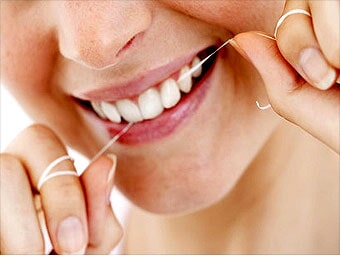
What Is Dental Flossing?
- Floss comes in a variety of materials and colors, but essentially, it is a very thin cord you hold between fingers of each hand and insert between adjoining teeth. The cord, or floss, helps loosen debris by gently moving it up and down and back and forth between the teeth.
- Flossing is a proven method for loosening debris from hard-to-reach surfaces of your teeth and gum lines. Next to brushing, flossing is a highly effective method for removing plaque on tooth surfaces your brush can’t reach very well.
Another benefit of flossing is increasing blood circulation in your gums. Gum stimulation is a necessary means of keeping your gum tissues healthy; strong gums are the foundation of your teeth. - IMPORTANT: If the spaces between your teeth are large, you will need to use a proxabrush to clean well. Flossing is usually not effective.
How Often To Floss
Our office recommends that you practice flossing once a day. Many people find that flossing at night is an easy bedtime routine; moreover, nighttime flossing helps to protect your teeth during sleep, when harmful plaque can do a lot of damage.
Types of Floss
- Dental floss comes in a variety of materials, colors, and even flavors. Waxed varieties are slipperier, allowing people with extremely tight spaces between their teeth to floss more easily. Popular flavors of floss include wintergreen and cinnamon. Waxed floss does tend to fray more than unwaxed floss.
- A type of material called wide floss can be effective for people with large spaces between their teeth, or for people with delicate bridge work.
- Floss can be purchased in small self-dispensing boxes. Floss can also be purchased in special, single-use holders, a useful invention people who have a hard time wrapping floss around their fingers, including those with dexterity problems or arthritis.
Flossing Techniques
- Most people who floss wrap 1-2 inches of floss around a finger on each hand, and use the floss in between on their teeth. The important thing is that you leave plenty of floss in between to allow you to maneuver inside your mouth.
- One effective way is to break off about a foot of floss. Wrap one end of the floss a few times around the middle finger of each hand. You can use your forefinger and thumbs to maneuver the floss inside your mouth.
- Press the floss in between two teeth and gently press downward (or upward if doing an upper set of teeth). Next, glide the floss up and down a few times against the surfaces of both teeth, carefully doing so at and below the gum line as well. Repeat this procedure for each tooth, taking up the slack when floss becomes worn or frayed.
- Don’t be alarmed if your gums slightly bleed the first time you floss. This is normal and will cease when your gums become used to flossing.
For Those with Special Needs
- Those who have a hard time holding on to a piece of floss or a toothbrush can try supplementing the toothbrush handle with a rubber handle grip or ball, or even lengthening the handle with a stick or piece of plastic.
- Floss can also be tied into a tiny loop on either side, making it easier to grasp and control the floss with your fingers.
Flossing Alternatives
- There are several alternatives to flossing for those who find it too difficult, too painful (sensitive gums or gum disease) or ineffective (those people with braces or delicate bridge work. But remember one thing: Never use a toothpick as a substitute for flossing. Toothpicks can tear delicate gum tissue and may damage existing dental restorations.
- One popular flossing alternative is called a water pick, or irrigator.
- Water picks use powerful tiny bursts of water to blast away food particles and other debris in hard-to-reach areas of your mouth. Dentists use professional-grade water picks when preparing a tooth for restoration, or in general cleaning and exams.
- People with painful gum disease or highly sensitive gums may find water picks useful for supplementing their brushing regimen. And people with orthodontia, including braces, have found water picks quite useful because toothbrush bristles often get stuck. Water picks are not a substitute for flossing.
- Antibacterial rinses (over the counter and by prescription) are somewhat effective.
- You should replace your toothbrush at least four times a year – more often if you have been sick.
Nutrition and Your Teeth

It has long been known that good nutrition and a well-balanced diet is one of the best defenses for your total health. Providing your body with the right amounts of vitamins and minerals helps your teeth and gums-as well as your immune system-stay strong and ward off infection, decay and disease.
Harmful acids and bacteria in your mouth are left behind from eating foods high in sugar and carbohydrates. These include carbonated beverages, some kinds of fruit juices, and many kinds of starch foods like pasta, bread and cereal. While no links have been actually made between gum disease and a poor diet, nutrition problems (including obesity and overeating) can create conditions that make gum disease easier to contract.
Adult Nutrition and Teeth
There’s no discounting the importance of continuing a healthy balanced diet throughout your adult life.
If you develop a weight problem, change your diet and get regular exercise. Be aware that some so-called fad diets have been known to cause serious deficiencies in recommended levels of minerals and vitamins.
Of course, good oral hygiene helps ensure that harmful bacteria and plaque-the sticky substance that coats your teeth during sleep and after meals-are effectively minimized. Adults also are encouraged to avoid eating “sticky” foods such as caramels and dried fruits because they leave behind stubborn substances on teeth and only encourage needless plaque formation.
Children’s Nutrition and Teeth
Overall, we age, period. Our teeth age as well as our bodies. The better we take care of them, the longer they last. Dr. Michaels often asks patients if they are proactive or reactive.
Good eating habits that begin in early childhood can go a long way to ensuring a lifetime of good oral health.
Children should eat foods rich in calcium and other kinds of minerals, as well as a healthy balance of the essential food groups like vegetables, fruits, dairy products, poultry and meat. Fluoride supplements may be helpful if you live in a community without fluoridated water but consult with our office first. (Be aware that sugars are even found in some kinds of condiments, as well as fruits and even milk.)
Allowing your children to eat excessive amounts of junk food (starches and sugars)-including potato chips, cookies, crackers, soda, even artificial fruit rollups and granola bars-only places them at risk for serious oral health problems down the road, including obesity, osteoporosis and diabetes. The carbonation found in soda, for example, can actually erode tooth enamel. Encourage your child to use a straw when drinking soda; this will help keep at least some of the carbonated beverage away from the teeth.
